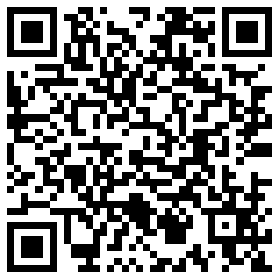语法学习对于小学生来说一直都是比较难的,之前给大家分享过人教版小学三年级和四年级英语语法知识总结归纳,今天就大家分享一下人教版小学五年级英语重点语法知识分类总结归纳。以方便大家学习。

语法1 be 动词
Be 动词的用法:
(1) Am–was; Is –was; Are–were; 口诀: I用 am you用 are is 用在他她它, 复数全用 are。
(2) 肯定和否定句: I am (not) from London. He is(not) a teacher. She is(not) in the dining room.My hair is(not) long. Her eyes are(not) small.
(3) 一般疑问句: Are you a Chinese? Yes I am. No I amn’t. Are they American? Yes they are.No they aren’t. Is the cat fat? Yes it is. No it isn’t.
语法2 人称代词和物主代词
人称代词和物主代词
1. 人称代词主格和宾格的区别: 主格通常位于句中第一个动词之前(有时候位于 than 之
后) , 宾格一般位于动词或介词之后。
2. 物主代词形容词性与名词性的区别: 形容词性用时后面一般要带上名词, 名词性则单独使用, 后面不带名词。
语法 3 名词复数和动词三单
一、 名词复数规则
1. 一般情况下, 直接加-s, 如: book-books bag-bags cat-cats bed-beds
2. 以 s. x. sh. ch 结尾, 加-es, 如: bus-buses box-boxes brush-brushes watch-watches
3. 以“辅音字母+y”结尾, 变 y 为 i 再加-es, 如: family-families strawberry-strawberries
4. 以“f或 fe”结尾, 变 f或 fe 为 v 再加-es, 如: knife-knives
5. 不规则名词复数: man-men woman-women policeman-policemen
policewoman-policewomen mouse-mice child-children foot-feet.tooth-teeth fish-fishpeople-people Chinese-Chinese Japanese-Japanese。
语法 4 一般现在时
一般现在时一般现在时基本用法介绍
一般现在时的功能
1.表示事物或人物的特征、 状态。 如: The sky is blue.天空是蓝色的。
2.表示经常性或习惯性的动作。 如: I get up at six every day.我每天六点起床。
3.表示客观现实。 如: The earth goes around the sun.地球绕着太阳转。
一般现在时的构成
1. be 动词: 主语+be(amisare)+其它。 如: I am a boy.我是一个男孩。
2.行为动词: 主语+行为动词(+其它)。 如: We study English.我们学习英语。
当主语为第三人称单数(he sheit)时, 要在动词后加”-s”或”-es”。 如: Mary likes Chinese.玛丽喜欢汉语。
一般现在时的变化
1. be 动词的变化。
否定句: 主语+ be + not +其它。 如: He is not a worker.他不是工人。
一般疑问句: Be +主语+其它。 如: -Are you a student? -Yes. I am. / No I’m not.
特殊疑问句: 疑问词+一般疑问句。 如: Where is my bike?
2. 行为动词的变化。
否定句: 主语+ don’t( doesn’t ) +动词原形(+其它)。 如: I don’t like bread.
当主语为第三人称单数时, 要用 doesn’t 构成否定句。 如: He doesn’t often play.
一般疑问句: Do( Does ) +主语+动词原形+其它。如: – Do you often play football? – Yes I do. / No I don’t.
当主语为第三人称单数时, 要用 does 构成一般疑问句。
如: – Does she go to work by bike? – Yes she does. / No she doesn’t.
特殊疑问句: 疑问词+一般疑问句。 如: How does your father go to work?
语法5 现在进行时
现在进行时
1. 现在进行时表示现在正在进行或发生的动作, 也可表示当前一段时间内的活动或现阶
段正在进行的动作。
2. 现在进行时的肯定句基本结构为 be+动词 ing.
3. 现在进行时的否定句在 be 后加 not。
4. 现在进行时的一般疑问句把 be 动词调到句首。
5. 现在进行时的特殊疑问的基本结构为: 疑问词不达意 + be + 主语 + 动词 ing?
但疑问词当主语时其结构为: 疑问词不达意 + be + 动词 ing?
动词加 ing 的变化规则
1. 一般情况下, 直接加 ing, 如: cook-cooking
2. 以不发音的 e 结尾, 去 e 加 ing, 如: make-making taste-tasting
3. 如果末尾是一个元音字母和一个辅音字母, 双写末尾的辅音字母, 再加 ing, 如:
run-running stop-stopping。
语法 6 将来时
将来时
1. 概念:
表示将要发生的动作或存在的状态及打算、 计划或准备做某事。 句中一般有以下时间状语:
tomorrow next day(week month year…)soon the day after tomorrow(后天) 等。
2. 基本结构: ①be going to + do; ②will+ do.
3. 否定句: 在 be 动词(am is are)后加 not 或情态动词 will 后加 not 成 won’t。
例如: I’m going to have a picnic this afternoon.→ I’m not going to have a picnic this afternoon.
4. 一般疑问句: be 或 will 提到句首, some 改为 any and 改为 or, 第一二人称互换。例如: We are going to go on an outing this weekend. → Are you going to go on an outing this weekend?
5. 对划线部分提问: 一般情况, 一般将来时的对划线部分有三种情况。
①问人。 Who 例如: I’m going to New York soon. →Who’s going to New York soon.
②问干什么。 What … do.例如: My father is going to watch a race with me this afternoon. →What is your father going to do with you this afternoon.
③问什么时候。 When.例如: She’s going to go to bed at nine. →When is she going to bed?
6. 同义句: be going to = will.
语法7 一般过去时
一般过去时
1. 概念:一般过去时表示过去某个时间发生的动作或存在的状态, 常和表示过去的时间状语连用。 一般过去时也表示过去经常或反复发生的动作感谢。
2.Be 动词在一般过去时中的变化:
⑴am 和 is 在一般过去时中变为 was。 (was not=wasn’t)
⑵are 在一般过去时中变为 were。 (were not=weren’t)
⑶带有 was 或 were 的句子, 其否定、 疑问的变化和 is am are 一样, 即否定句在 was 或were 后加 not, 一般疑问句把 was 或 were 调到句首。
3. 句中没有 be 动词的一般过去时的句子
否定句: didn’t +动词原形, 如: Jim didn’t go home yesterday.
一般疑问句: 在句首加 did, 句子中的动词过去式变回原形。 如: Did Jim go home yesterday?
特殊疑问句: ⑴疑问词+did+主语+动词原形? 如: What did Jim do yesterday?
⑵疑问词当主语时: 疑问词+动词过去式? 如: Who went to home yesterday?
动词过去式变化规则:
1. 一般在动词末尾加-ed, 如: pull-pulled cook-cooked
2. 结尾是 e 加 d, 如: taste-tasted
3. 末尾只有一个元音字母和一个辅音字母的重读闭音节, 应双写末尾的辅音字母, 再加-ed,如: stop-stopped
4. 以“辅音字母+y”结尾的, 变 y 为 i, 再加-ed, 如: study-studied
5. 不规则动词过去式: amis-was are-were do-did see-saw say-said give-gave get-gotgo-went come-came have-had eat-ate take-took run-ran sing-sang put-put make-made
read-read write-wrote draw-drew drink-drank fly-flew ride-rode speak-spoke sweep-sweptswim-swam sit-sat。
语法 8 There be 句型与 have has
There be 句型与 have has 的区别
1. There be 句型表示: 在某地有某物(或人)
2. 在 there be 句型中, 主语是单数, be 动词用 is ; 主语是复数, be 动词用 are ; 如有几件物品, be 动词根据最*近 be 动词的那个名词决定。
3. there be 句型的否定句在 be 动词后加 not 一般疑问句把 be 动词调到句首。
4. there be 句型与 have(has) 的区别: there be 表示在某地有某物(或人) ; have(has) 表示某人拥有某物。
5. some 和 any 在 there be 句型中的运用: some 用于肯定句, any 用于否定句或疑问句。
6. and 和 or 在 there be 句型中的运用: and 用于肯定句, or 用于否定句或疑问句。
7. 针对数量提问的特殊疑问句的基本结构是:
How many + 名词复数 + are there + 介词短语?
How much + 不可数名词 + is there + 介词短语?
8. 针对主语提问的特殊疑问句的基本结构是: What’s + 介词短语?
以上就是小编给大家分享的“人教版五年级英语重点语法知识分类总结归纳”内容。对于小学生英语学习,英语口语的学习也是很重要的,这里给大家分享一家成人英语口语教育试听课:https://www.nicekid.com/t/nicekid-bite,教学种采用动画切片和场景构建结合的教学,能吸引孩子学习英语,一节课学完差不多能记住80%的内容,课下再结合配套的课后练习作业就能全部掌握,再也不用担心孩子记不住啦!大家也可以点击链接听取试听课去体验一下教学效果。今天的分享就到这里啦!








